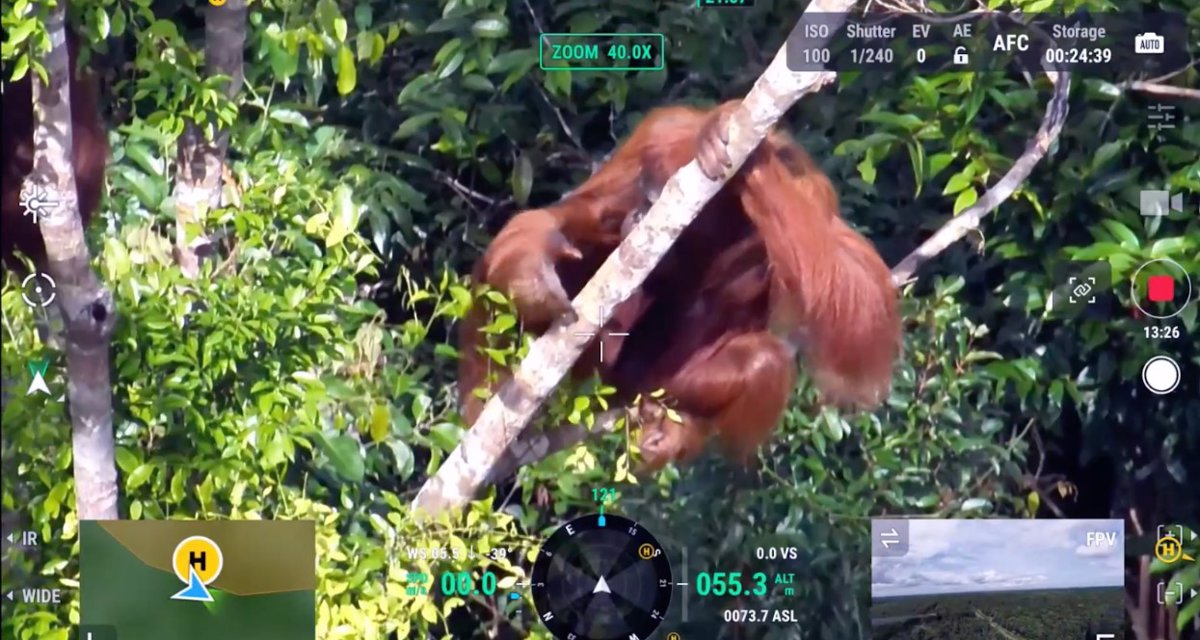Orangutans in Borneo are facing a severe threat due to habitat destruction caused by human activities, with their population declining significantly. The International Orangutan Foundation (OFI) has raised concerns about this issue, urging immediate action to protect these endangered species. Drones have emerged as an essential tool for managing and maintaining natural ecosystems, including orangutan populations.
To address the challenges posed by habitat destruction and fragmentation, researchers have turned to drone technology to update orangutan censuses. Traditional methods of manual counting nests in the jungle were time-consuming, inaccurate, and dangerous for researchers. However, with drones equipped with thermal imaging and zoom technology, researchers can now detect and count orangutans more precisely and efficiently.
This innovative approach not only speeds up the counting process but also provides comprehensive knowledge of orangutan populations. This information is critical for informed conservation strategies aimed at protecting these endangered species from further decline. Moreover, this technology can be extended to other threatened species, demonstrating its versatility in wildlife conservation efforts.
The project serves as a model for effective counting solutions that offer hope for the survival of endangered species. Innovation plays a vital role in conservation efforts by providing new tools and techniques that enable researchers to gather accurate data on population numbers, locations, and statuses of different species. This knowledge is crucial for developing effective conservation strategies aimed at mitigating the impact of human activities on natural ecosystems.
In conclusion, drone technology has proven to be an effective tool in managing and maintaining natural ecosystems such as those inhabited by orangutans in Borneo. Researchers can leverage this technology to update orangutan censuses accurately while minimizing environmental impact and ensuring safety for researchers working in challenging conditions.
Furthermore, this innovation serves as a reminder that technological advancements play a significant role in wildlife conservation efforts. By using cutting-edge technologies like drones equipped with thermal imaging and zoom technology, researchers can gain valuable insights into animal behavior patterns and ecological systems that were previously difficult to observe directly.
As such, it is crucial that we continue investing in innovative technologies that support wildlife conservation efforts worldwide. Only through collaborative efforts between scientists, policymakers, NGOs, and local communities can we hope to protect endangered species from extinction while preserving biodiversity for future generations.



